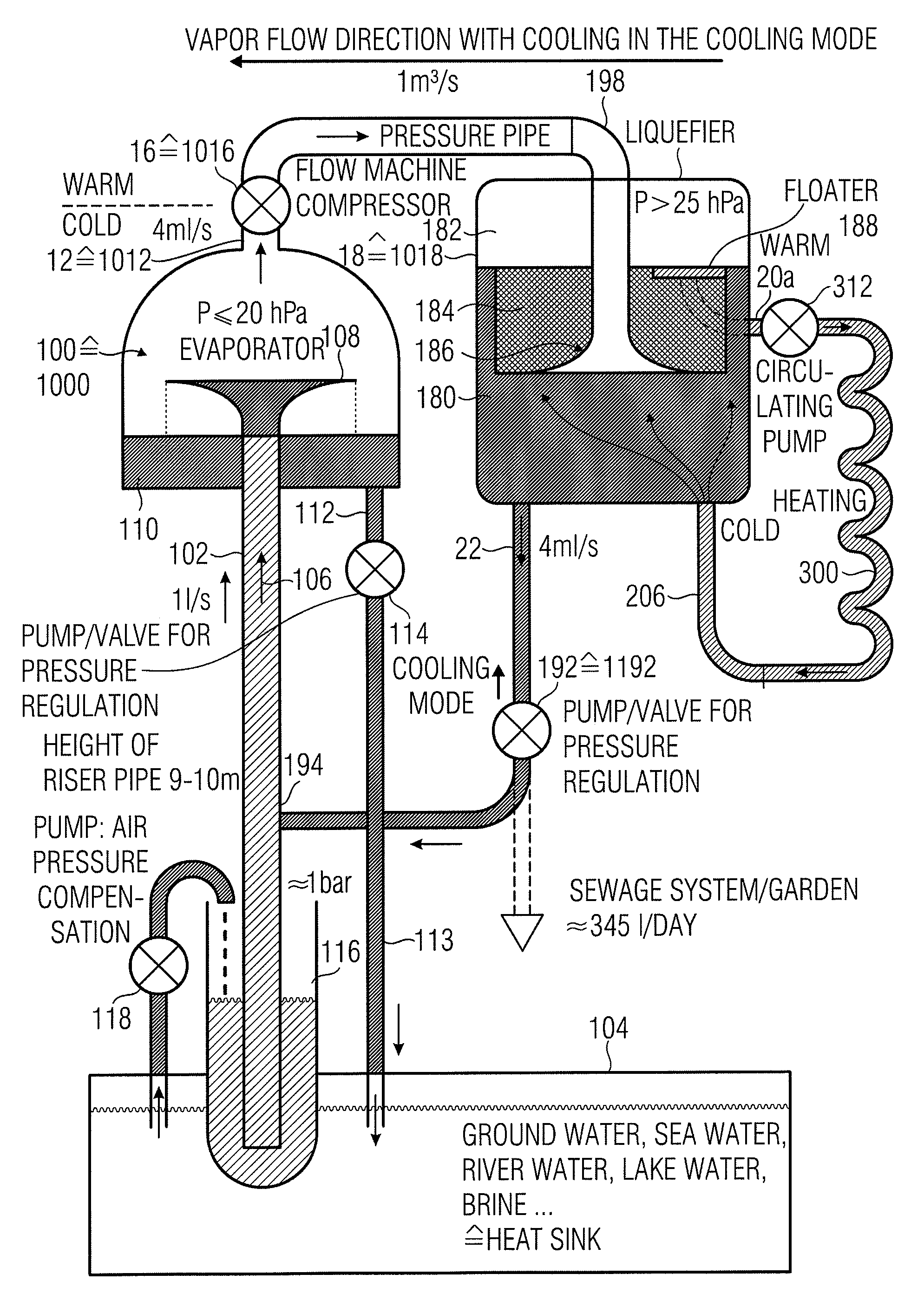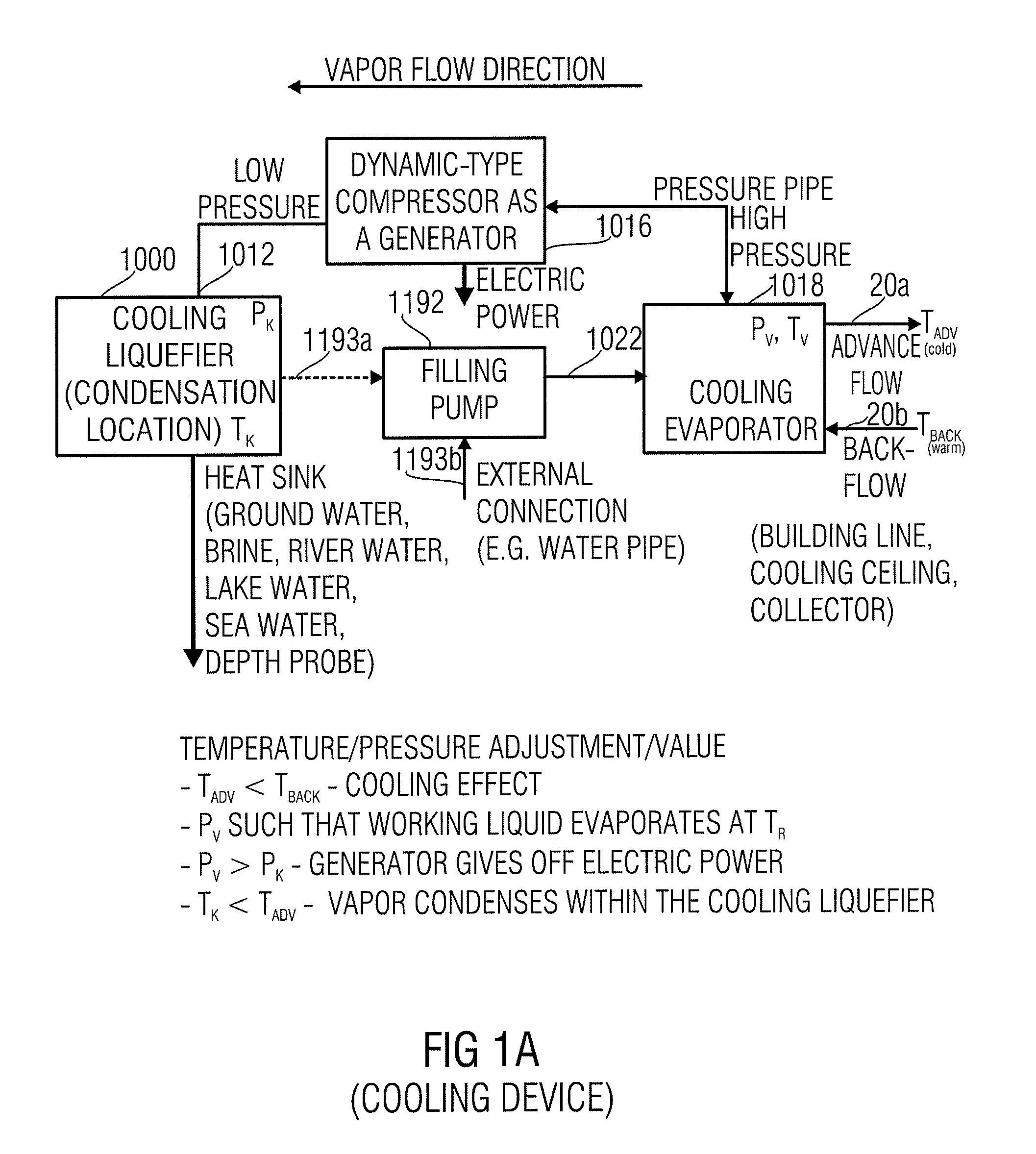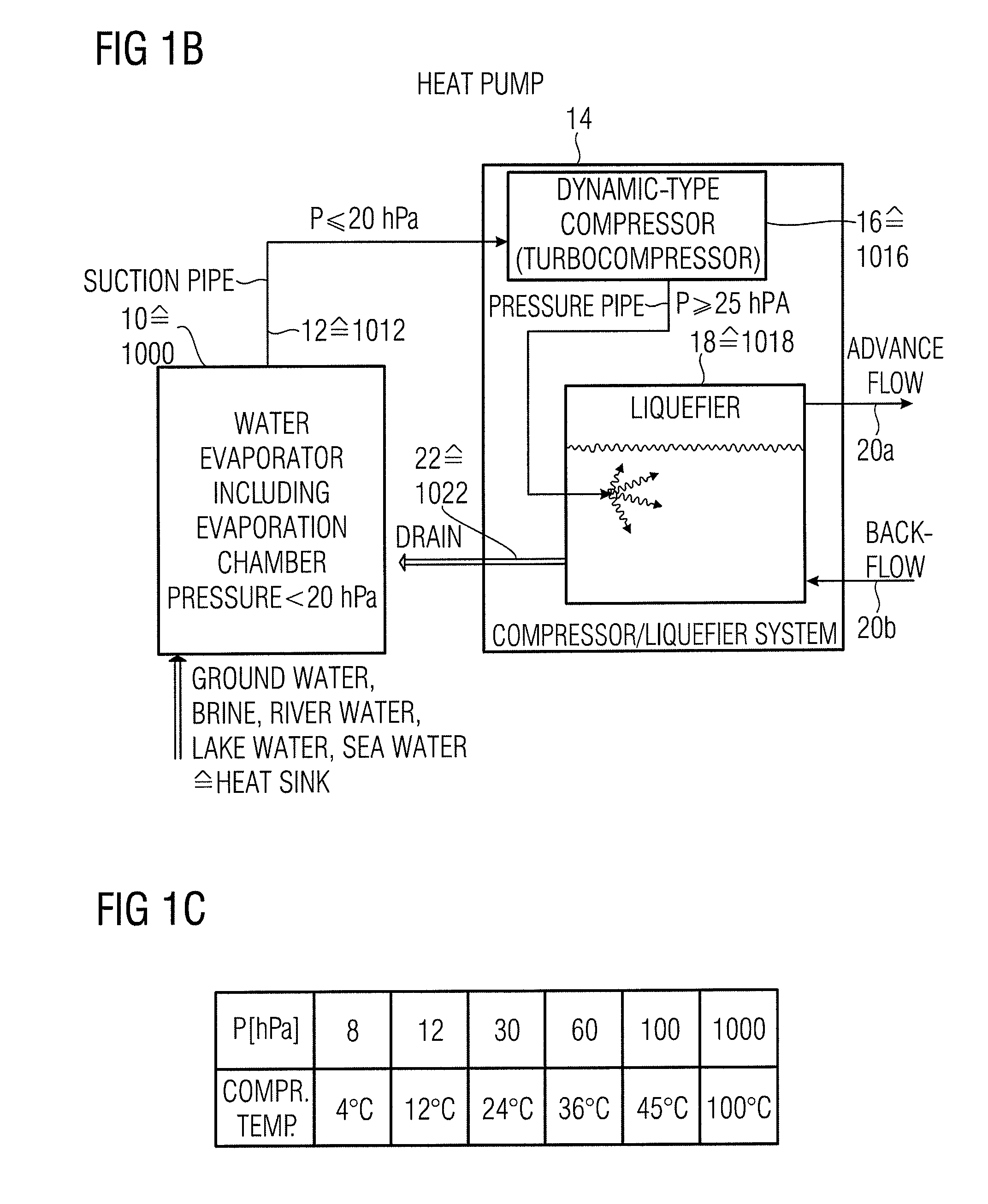Heat pump comprising a cooling mode
a heat pump and cooling mode technology, applied in heat pumps, domestic cooling devices, lighting and heating devices, etc., can solve the problems of increasing entropy, constant losses, and reducing the effectiveness of the entire process, so as to eliminate primary heat exchanger losses, reduce the length of riser pipes, and reduce the effect of pressur
- Summary
- Abstract
- Description
- Claims
- Application Information
AI Technical Summary
Benefits of technology
Problems solved by technology
Method used
Image
Examples
Embodiment Construction
[0072]FIG. 1A shows an inventive fundamental representation of the heat pump comprising a cooling mode, or of the cooling method, the cooling method immediately resulting from the functionalities of the heat pump comprising a cooling mode. The inventive heat pump comprising a cooling mode includes a cooling evaporator 1018 having a comparatively high pressure PV. In particular, the cooling evaporator 1018 further comprises a heating advance flow 20a having an advance flow temperature TADV, and a heating backflow 20b having a backflow temperature TBACK. In particular, the cooling evaporator may be brought to such a pressure PV that a vaporization temperature is below a temperature of an object to be cooled with which the heating backflow 20b may be thermally coupled. The backflow temperature TBACK is thus higher than the advance flow temperature TADV, which is why the heating advance flow 20a is referred to as “cold”, whereas the heating backflow 20b is referred to as “warm”. The coo...
PUM
 Login to View More
Login to View More Abstract
Description
Claims
Application Information
 Login to View More
Login to View More - R&D
- Intellectual Property
- Life Sciences
- Materials
- Tech Scout
- Unparalleled Data Quality
- Higher Quality Content
- 60% Fewer Hallucinations
Browse by: Latest US Patents, China's latest patents, Technical Efficacy Thesaurus, Application Domain, Technology Topic, Popular Technical Reports.
© 2025 PatSnap. All rights reserved.Legal|Privacy policy|Modern Slavery Act Transparency Statement|Sitemap|About US| Contact US: help@patsnap.com



